From Floridata
by
Steve Christman
Diospyros virginiana
Common
Names: American persimmon, common persimmon
Botanical
Family: Ebenaceae, the ebony Family
Description
The
persimmon is a slow-growing deciduous tree, rarely exceeding 50 ft (15
m) in height. The leaves are generally elliptic, 4-6 in (10-15 cm)
long, dark green on top and pale green underneath. The bark on older
trunks is black and broken up into distinctive, regular square blocks.
The flowers are greenish and inconspicuous, with each tree having only
male (staminate) or female (pistillate) flowers, a condition called
dioecious. The female lowers develop into showy orange fruits, up to 2
in (5 cm) in diameter, that are very astringent during maturation, but
deliciously sweet when fully ripe. Several cultivars selected for fruit
quality, seedlessness, cold hardiness and disease resistance are
available.
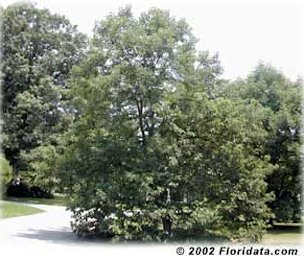
The is the 'Meador' persimmon, a cultivar selected for fruit
quality and cold hardiness growing in Ohio (Zone 5).
Location
Persimmon, Diospyros virginiana,
is native to eastern North America from New England, west to Kansas,
and south to Texas and Florida. It is one of the most widely-adapted of
trees, growing naturally in bottomland swamps, along stream banks, in
upland forests, in fields, piney woods, and even dry scrub lands.
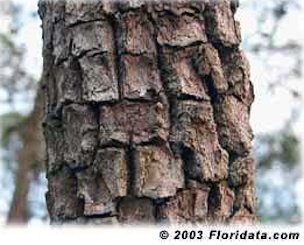
Its thick distinctively blocky bark helps to identify the
American persimmon in the field.
Culture
Light: Prefers full sun, but also does well in partial sun.
Moisture: Highly adaptable, tolerates drought and even brief flooding.
Hardiness: USDA Zones 6 - 10. Certain cultivars, like the 'Meador' persimmon shown here are hardy to Zone 5.
Propagation: Easily propagated from seed, but named cultivars are grafted onto seedling rootstock.
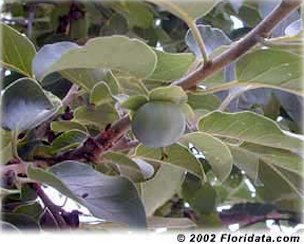
This is the foliage and unripe fruit of the 'Meador'
American persimmon, a cultivar selected for fruit quality.
Usage
Wild
persimmons and their seedlings vary greatly in fruit quality and size.
For the cultivated landscape, it is best to obtain named cultivars, and
for most of these, you will need two or more trees. Plant persimmon
trees in the natural area of your landscape where their fruit will can
be shared with wildlife as well as children.
Features
When
you gently shake a persimmon tree, the ripe fruits fall to the ground.
If you have to pull the fruit off the tree, it will surely pucker your
mouth inside out! Ripe persimmons are delicious out of hand, and can be
made into puddings and cakes. Frozen, they satisfy like ice cream,
while dried persimmons are like dates. Persimmon wood is prized for its
beauty and extreme density, and used for golf club heads and pool cues.
Warning
Fallen fruit on a walkway or patio can be a messy nuisance.
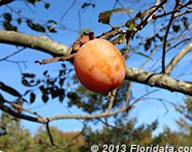 | 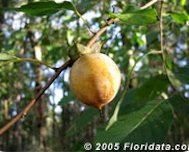 | 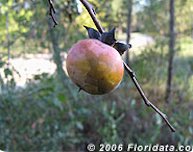 | | Ripe American persimmon fruit | American persimmon fruit | American persimmon fruit | 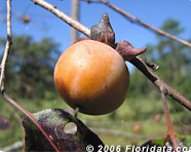 | 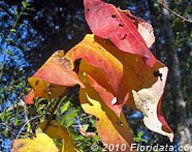 | 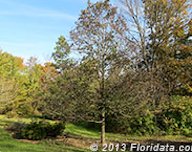 | | American persimmon | American persimmon leaves in
fall color | American persimmon tree (winter)
Boone County (Kentucky) Arboretum |
|
|
Bibliography
Christman,
Steve. "Diospyros virginiana." Floridata, no. 271, Published 26 Feb. 1998, Updated 14 Feb. 1999, 20 Feb. 2003, 4 Aug. 2004, floridata.com/plant/271.
Accessed 28 Nov. 2021.
Published 28 Nov. 2021 LR
|








